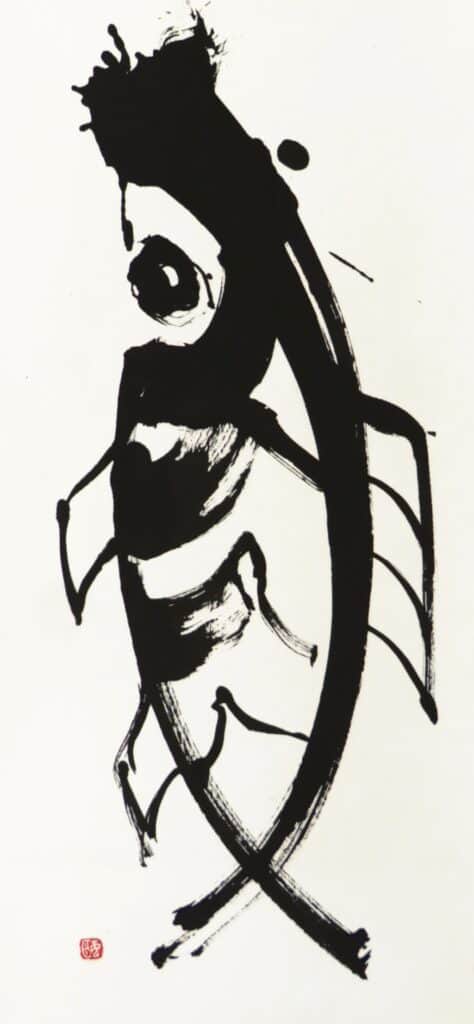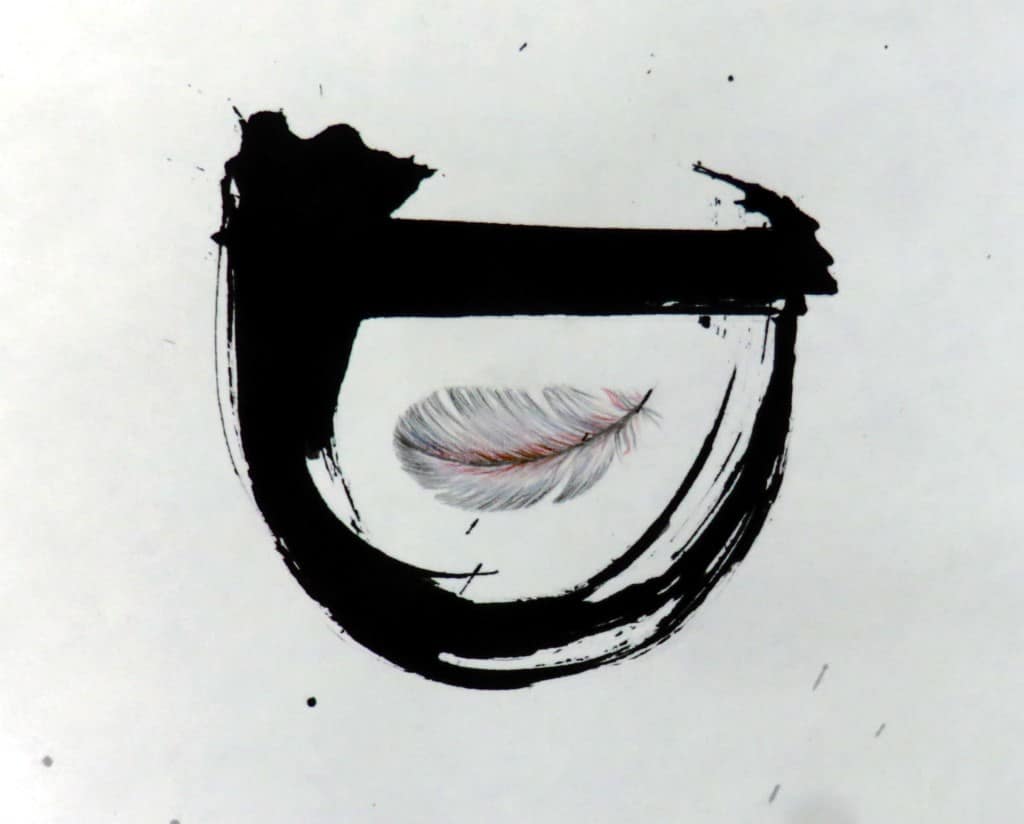Born as the first second generation Japanese Australian in a small country town, I did not blend in very well with the residents. Apart from looking different, I became aware that I had different thought patterns and attitudes than the people around me. The only exception was my Japanese Mother. It wasn’t until I traveled to Japan in my mid 20’s to visit my mother’s family, that I realized that there were people on the other side of the world that thought like I did.
When I returned to Australia, this was a very comforting thought. Anytime I felt alone, I would look at the moon. The view of the moon was the same moon, whether in Japan or Australia.
During my years at university, while completing a Bachelor of Fine Arts, I realized that my innate Japanese influence was becoming evident in my artwork. During a critique as part of an art lecture, I was told with that I was putting too much negative space in my artwork and that it looked too Japanesey. However, I embraced this, and initiated my own self-study of Japanese art as it was non-existent in Australia at that time.
Over the years I gained knowledge, skill and techniques of Western style art, but I still had a thirst for a Japanese style of art. I attended Sumi-e workshops, and used this style of lines in my artwork for years. I fell in love with handmade paper and how ink would be absorbed and become one with the paper.
In 2010, I discovered on the internet an artist named Hidekichi Shitemoto doing a painting performance. I was completely awestruck. In 2015, I found Kenryo Hara’s performances and artwork via the internet, and I was totally amazed.
The following year, 2016, I began to feel that I had stagnated as an artist. Therefore, it was time to leave my comfort zone. I became an artist in residence at Studio Kura in Kyushu, Japan.
While I was there, I contacted Kenryo Hara, requesting to take a workshop with him. It took one evening of clumsily swishing a big black inky brush around on a large sheet of calligraphy paper to become completely obsessed and passionate about Kodaimoji.
I relocated to Japan soon after to continue to learn about this style of Kodaimoji under the guidance of Kenryo Hara, Master of Bokkoku. Residing in Japan, I became a member of Bokkoku, and learned the basic of Kodaimoji. Kodaimoji originated over 3000 years ago in the Shang Dynasty in China and was believed to communicate to the divine. Kodaimoji are pictographs and are related to present day Kanji.
Since leaving Bokkoku, I developed my own independent style and began to explore the possibilities of the characters metamorphosing back into their own reality. For instance, the Kodaimoji for birds have Sumi-e painted feathers as it metamorphoses from the character back into a bird.
To enhance my Sumi-e techniques, I attended a traditional Sumi-e class and a workshop by Hidekichi Shitemoto. I work intuitively so my artwork can vary from being purely Kodaimoji to a fusion of Kodaimoji and Sumi-e painting.
“Birth Celebration” is the Kodaimoji of a baby’s first bath, but it represents the joy of both mother and baby surviving the traumatic event of childbirth which can be dangerous for both. The baby splashes with pure innocence and delight, and this also expresses the mother’s elation of both surviving childbirth.
However, my image called “Phoenix Flight of Fear” expresses panic, and in the attempt to flee to safety, the Kodaimoji character of a bird metamorphoses back into a bird. The feathers have detached due to the frantic actions to escape and are floating in the turbulent wake.
My artistic journey continues as my Kodaimoji and Sumi-e techniques evolve in my attempts to express my inner truth and discover the hidden essence of Japanese calligraphy, art and culture to be reinvented into my artwork. For more information; FaceBook , Blogspot



